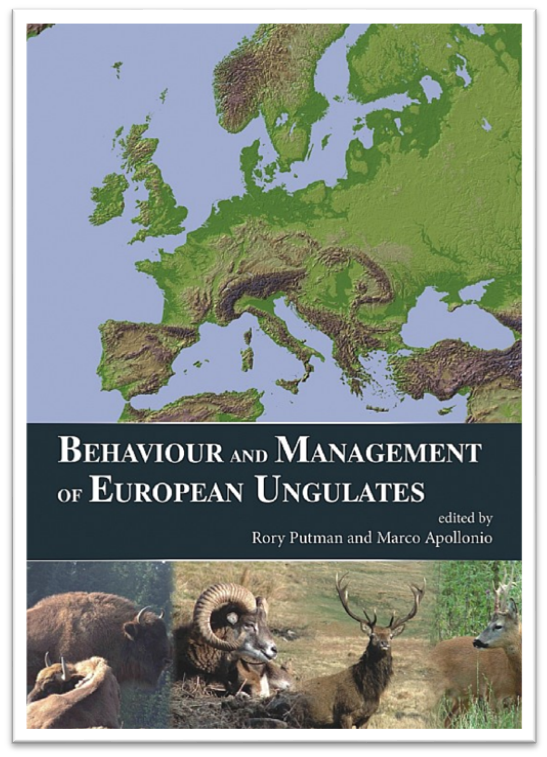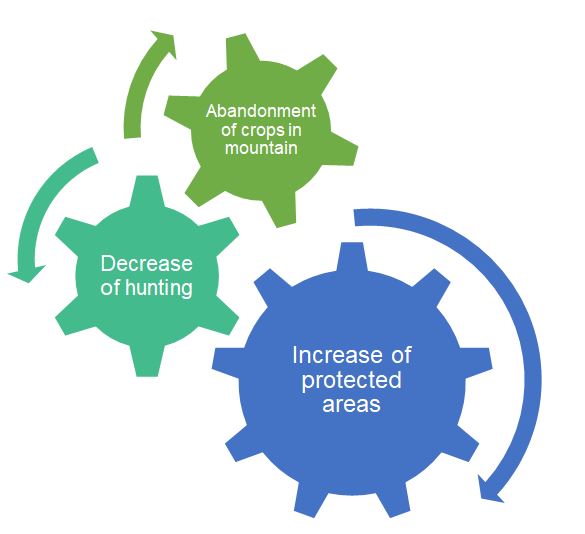PROBLEM DEFINITION
The word pest is usually referred to small creatures that can cause damage to vineyards, like for example insects, or in case of larger pets, rats and mice.
In addition to these pets, farmers must also defend themselves by other animals, that can be considered a particular kind of pests. This is the case of ungulate animal (or wild animals), which can compromise in different ways vineyards and wine production.

UNGULATES DEFINITION
Literally, “ungulate” refers to any animal with hooves . More specifically, this term refers to a large group of mammals all of which have hooves. Ungulates can be divided into perissodactyls (odd-toed ungulates) and artiodactyls (even-toed ungulates).
This group includes boars, roe deer, fallow deer, deer and mouflons.
These animals represent a relevant problem for vineyards, for different reasons: the new vine shoots and fruits attract many ungulates animals that eat the fruit, leaves and plants and devastate – often irreparably – the agricultural lands.



UNGULATES IN EUROPE
At present time there are 20 ungulate species in Europe, with an estimated total number of 18 million. Roe deer, wild boar, and red deer represent the most important species.
Even if ungulates contribute significantly to biodiversity and represent an important cultural, social and economic asset, these species represent a relevant problem for crops in various European countries.
Austria copes with an estimated forest damage from ungulates of € 218 million every year. About 70% is caused by browsing of roe deer, red deer and chamois.
Red deer, roe deer and wild boar damage 24% of the young forests and 13.200 hectares in Poland.
In Sweden, the moose causes loss on pine wood quality of at least €50 million per year.
Croatia deals with €685.000 damage each year, where wild boar causes most damage to corn fields and pastures.

UNGULATES IN ITALY
In Italy there are eight different species of ungulates: wild boar, roe deer, red deer, fallow deer, alpine chamois, apennine chamois (pyrenaica ornata), alpine ibex, and mouflon.
In 1917 the only ungulates within the country were restricted to the Alps and a few other areas and the distribution of other ungulate species was restricted only to a few refuges.
From this time until the present, the situation has changed significantly, because ungulate distribution has increased dramatically especially in Central and Northern Italy, and, due largely to the spread of wild boar, also in the south of the country and islands.

UNGULATES IN TUSCANY
Tuscany is the region with the highest density of ungulates, and in Europe is second only to Austria.
According to 2016 Regional estimates, in Tuscany there are more than 450.000 ungulates, including 160.000 boars, 178.000 roe deer, 110.000 fallow deer, 4.500 deer and 2.500 mouflon.

WHY UNGULATES POPULATIONS IS SO LARGE?
Ungulates expansion in Italy, which affects the Alpine and Apennine areas, is due to the synergistic action of 3 main many factors, such as:
• Abandonment of crops in mountain environment
• Decrease of the hunting pressure
• Increase of the protected areas and implementation of reintroduction interventions.
The population has exploded because nature has taken its course.
However, the wine industry also have played a part. The fact that there are so many vineyards around means that these animals always have access to food and they don’t have to travel too far to find it.

THE IMPACT OF UNGULATES
This evolution of ungulates populations has allowed an overall enrichment and a greater stability of the ecosystems
In fact, there has been an increase in biodiversity in many natural areas and this facilitated the improvement of the species conservation status of the great carnivores at risk of extinction (e.g. the Wolf).
In addition, the increased presence on the territory of the populations of wild ungulates has also determined social and economic benefits such as the possible exploitation of tourism (especially in protected areas) and hunting.
On the other hand this evolution has caused an increasing interaction of these species with human activities, in terms of increase of damage to crops.
For all these reasons, it is necessary to implement an efficient fauna management measures system able both to respect environment and biodiversity and protect crops and vineyards.
REFERENCES
- Apollonio, Andersen, Putman (2010), European Ungulates and Their Management in the 21st Century, Cambridge University Press
- Argenti, Giovanni & Racanelli, Veronica & Bartolozzi, Sara & Staglianò, Nicolina & Guerri, Francesco. (2017). Evaluation of wild animals browsing preferences in forage resources. Italian Journal of Agronomy. 11/2017.
- Carnevali, L., Pedrotti, L., Riga, F. and Toso, S. (2007) Banca Dati Ungulati. Status, distribuzione, consistenza, gestione e prelievo venatorio. Rapporto INFS 2001–2005.
- ISPRA (2011), Impatto degli Ungulati sulle colture agricole e forestali: proposta per linee guida nazionali, 68/2011.
